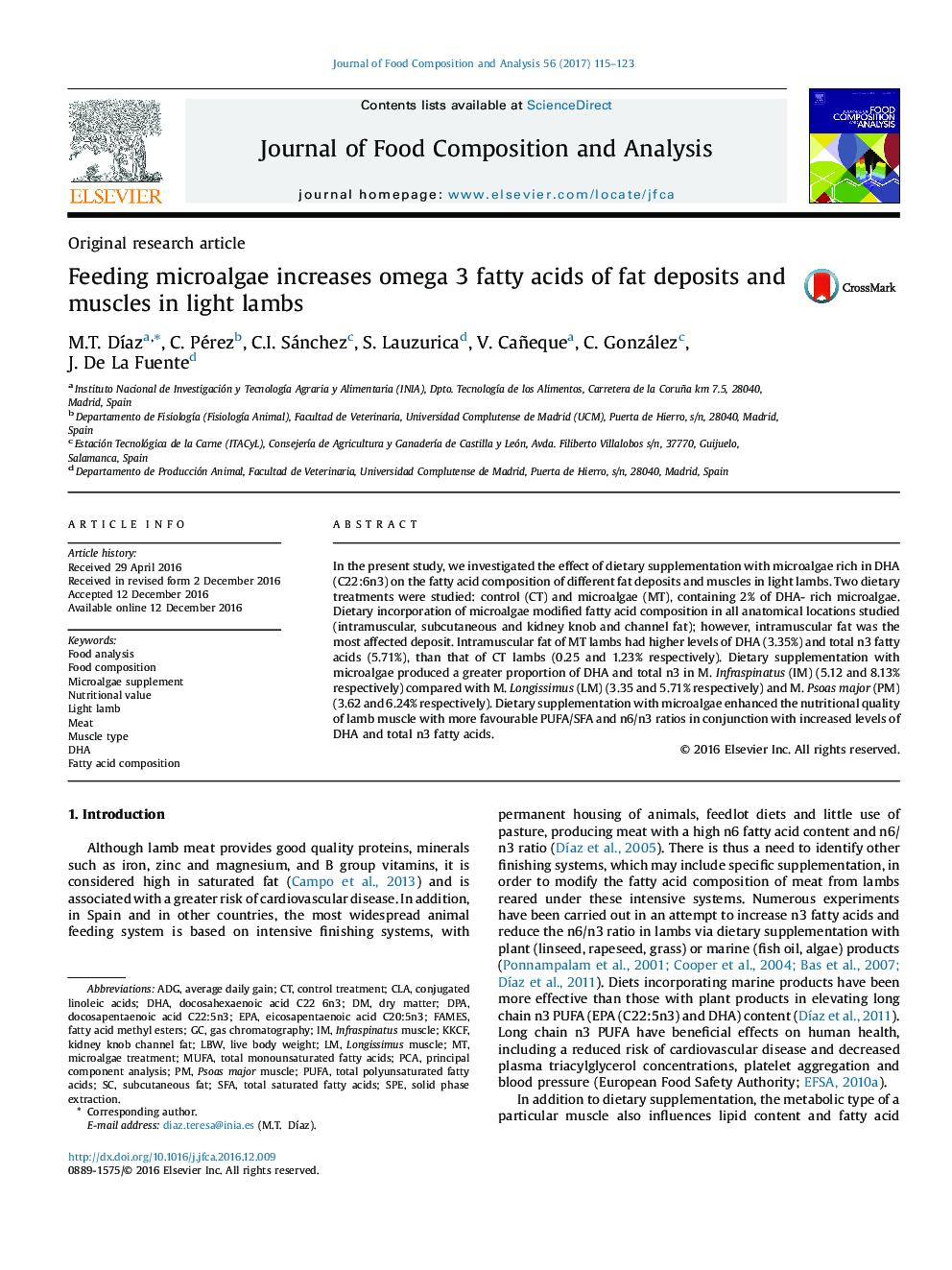| Article ID | Journal | Published Year | Pages | File Type |
|---|---|---|---|---|
| 5136986 | Journal of Food Composition and Analysis | 2017 | 9 Pages |
â¢Dietary DHA-rich microalgae modified fatty acid composition of lamb fat deposits.â¢Intramuscular fat was more affected than subcutaneous or internal fats.â¢Feeding DHA-rich microalgae improved fatty acid profile of intramuscular fat.â¢The M. Infraspinatus deposited more DHA and n3 than M. Longissimus..
In the present study, we investigated the effect of dietary supplementation with microalgae rich in DHA (C22:6n3) on the fatty acid composition of different fat deposits and muscles in light lambs. Two dietary treatments were studied: control (CT) and microalgae (MT), containing 2% of DHA- rich microalgae. Dietary incorporation of microalgae modified fatty acid composition in all anatomical locations studied (intramuscular, subcutaneous and kidney knob and channel fat); however, intramuscular fat was the most affected deposit. Intramuscular fat of MT lambs had higher levels of DHA (3.35%) and total n3 fatty acids (5.71%), than that of CT lambs (0.25 and 1.23% respectively). Dietary supplementation with microalgae produced a greater proportion of DHA and total n3 in M. Infraspinatus (IM) (5.12 and 8.13% respectively) compared with M. Longissimus (LM) (3.35 and 5.71% respectively) and M. Psoas major (PM) (3.62 and 6.24% respectively). Dietary supplementation with microalgae enhanced the nutritional quality of lamb muscle with more favourable PUFA/SFA and n6/n3 ratios in conjunction with increased levels of DHA and total n3 fatty acids.
